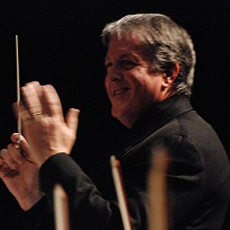Walt Disney Productions (1929-1939), Walt Disney Home Entertainment (December 4, 2001), 2 disc set, 305 mins plus supplements, 1.33:1 original full frame ratio, Dolby Digital 2.0 Surround, Not Rated, Retail: $32.99
Storyboard:
Between 1929 and 1939, Disney released several cartoons as an experiment in the field of animation. The Silly Symphonies were created to experiment with music, animation, and color in cartoons. They were a suggestion made by Disney’s music director Carl W. Stalling to Walt Disney about cartoons without a central character and where the main focus would be on music. Disney’s tin, two-disc set features thirty one of these cartoons, including six Academy Award winning features (Flowers and Trees, Three Little Pigs, The Tortoise and the Hare, The Country Cousin, The Old Mill, and The Ugly Duckling). I remember several of these cartoons from television when I was growing up and this set stirred up some serious nostalgic feelings in me.
The Sweatbox Review:
The first disc features two sections entitled Fables and Fairy Tales and Favorite Characters. Some notable cartoons in this sections are The Tortoise and the Hare, The Grasshopper and the Ants, Who Killed Cock Robin?, and Three Little Pigs. Film historian and Disney aficionado, Leonard Maltin provides an introduction and comments on some of the cartoons. If you search, there are some hidden Easter Eggs that provide introduction and footage of Walt Disney himself commenting on the Silly Symphonies.
Perhaps the most known characters from the first disc are from Three Little Pigs. The ‘uncensored’ cartoon is one of the most popular Silly Symphonies of all time and made stars out of the characters (including the villainous Big Bad Wolf). In the story, the Three Little Pigs are seen building houses. One makes it out of straw, the other out of wood, and the practical pig makes it out of bricks. Of course, the brick house takes the longest to make so the other two are playing, singing, and dancing while their brother is working hard. When the Big Bad Wolf comes to their houses, he blows them away one by one, until they escape to their brother’s house for the cartoon’s climax. The story is surely one of the best Silly Symphonies and the song, “Who’s Afraid of the Big Bad Wolf?” is one of the catchiest of all Disney tunes. It became an instant success and the song even garnered an Academy Award along with the cartoon itself. The disc also includes three sequels to the original feature. It includes The Big Bad Wolf, Three Little Wolves, and Practical Pig. Maltin provides an interesting commentary on the pigs, and in his commentary you can see part of the censored version of the cartoon that features the Big Bad Wolf disguised as a Jewish Peddler.
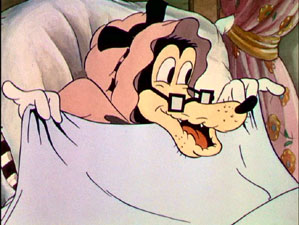
Other notable cartoons are The Tortoise and the Hare as well as The Grasshopper and the Ants. The enjoyable The Tortoise and the Hare became a landmark Disney cartoon because it was one of the first times that speed was depicted in a cartoon. The Grasshopper and the Ants is also a great cartoon and its catchy tune stays in your head long after it’s over (“Oh, the world owes us a livin’!”). It features the voice of Pinto Colvig who was already the voice of Goofy, Pluto and the Practical Pig, and would later provide the voice to Sleepy and Grumpy in Snow White and the Seven Dwarfs.
One of my favorite cartoons in the disc is Who Killed Cock Robin? In it, Robin is singing to a Mae West-like Ms. Jenny Wren when he’s shot with an arrow. During a trial, presided by a judge owl (who can only say “Who Killed Cock Robin?”) and with a jury chanting as a chorus, many witnesses are brought forth until Wren herself takes the stand. After the funny finale, everything is settled and the mystery is solved. Walt Disney appears in an interesting introduction to this Academy Award nominated short.
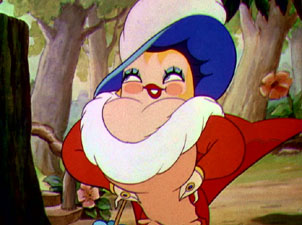
One of the most beautiful shorts is Wynken, Blynken, and Nod, based on the poem by Eugene Field. The cartoon is simple and it traces the journey of three cute babies in a wooden shoe sailing across the night sky. The three little fishermen, dressed in their pajamas, are trying to catch some starfish using candy canes as bait. There are many typical fishing gags, such as getting caught by your own hook, fighting with the fish, and hooks getting tangled up. Nod provides much of the comic relief since he’s tired, sleepy and keeps licking on the candy canes. After trying to catch a shooting star, and getting in the middle of a storm, the children return to the body of a baby. In the end, Wynken and Blynken were two little eyes and Nod was a baby’s head (according to the poem which is sung in the short). This is one of Disney’s most colorful shorts and the multi-plane camera is put to good use with the colorful background, stars, and clouds.

The second disc in the set focuses on the elements of music and nature in the Silly Symphonies. These are separated into the two eponymous areas called Accent on Music and Nature on the Screen. It also contains three supplemental features: The Song of the Silly Symphonies, Silly Symphonies Souvenirs, and a gallery of pictures and original poster art for the shorts.
The very first Silly Symphony was The Skeleton Dance and it was shot in black and white. The eerie atmosphere of this short is perfect. It’s much darker than most Disney shorts and it doesn’t attempt to be cute. Instead, it finds humor in the strangest forms. As the skeletons dance to the music and play with their bones, the viewer can’t help but find it funny. One scene that is particularly mesmerizing is when the skeleton walks up to the screen and steps back, and then does it again, while chattering his teeth. The short was a great beginning to a historic series and gave incredible hope for what was yet to come.
The first Silly Symphony to use Technicolor was Flowers and Trees. By this time, the two-strip Technicolor process had lost its luster, but Technicolor wanted to get back on the map with its three-strip process. Walt Disney agreed to use the new process in exchange for exclusive rights over three years with animated films. The short follows the story of two anthropomorphic trees that are falling in love with one another. The male plays instruments and the female dances in the wind and plays with the flowers. There is an older tree that is the villain and he tries to break them apart and take the girl for himself by starting a fire. As the fire invades the land, we see our heroes and flowers fight it and the old tree. It’s not one of my favorite Silly Symphonies, but it is charming. The short ended up winning the first Academy Award given to an Animated Short feature.
I think that one of the most breathtaking Silly Symphonies is The Old Mill, which won the Academy Award in 1937. The animators at Disney were making several experiments with this short to see what they could achieve with Snow White and the Seven Dwarfs. In the story, an old mill is the home for several critters when a very powerful storm comes to interfere with their lives. Animators worked with water reflections, lightning, wind, and rain to bring this short to life. The quality of the animation is incredible for a short film (Disney himself claims that it was meant to have the highest quality available). This was the first time that animators were experimenting with the multi-plane camera and it worked extremely well.
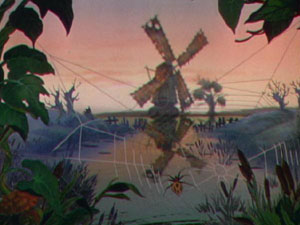
Music Land is another good short. It tells the story of two entire nations, one the Land of Symphony and the other the Isle of Jazz. These two are cleverly separated by the Sea of Discord. Both nations loathe each other, but a curious Violin princess from the Land of Symphony and a Saxophone prince from the Isle of Jazz fall in love. The saxophone crosses the Sea of Discord to meet his love, causing a war between the two nations. The cartoon is full of great music, and all of the characters ‘speak’ to the sound of their own musical instruments. It depicted a real dilemma at the time when jazz was viewed with contempt by older generation of parents. The film includes many visual puns including The King of the Isle of Jazz who is drawn to resemble the then King of Jazz, bandleader Paul Whiteman.
Another historic moment for Walt Disney was the Silly Symphony, The Wise Little Hen. In the story, a hen asks two of her fellow friends to help her plant her corn, but both give her an excuse. When it’s time to harvest the corn, she goes to ask for their help once again. This time, the two friends, who have formed “The Idle Hour Club”, also give excuses, such as belly aches. Finally, when it’s time to eat the corn, the two friends come running to the Wise Little Hen when she offers them to help her eat her corn. It all ends with the Wise Little Hen proving that she is wise and she cleverly has read through their act. The two friends that refuse to help the Wise Little Hen are Peter Pig and Donald Duck, in his cartoon debut. With an elongated neck, he looks a bit different, but he sounds the same and even gives his famous “Oh boy, oh boy, oh boy!” routine.
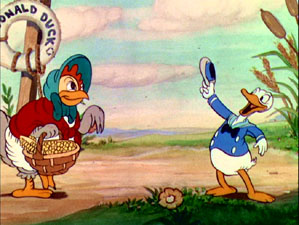
My favorite Silly Symphony, and the reason I wanted to own this disc so badly, is The Ugly Duckling. This was the only Silly Symphony that was made twice. The 1931 version is in black and white, and it’s not as great as the one that came later. It shows the ugly duckling hatching from a chicken’s nest! After being shunned by his surrogate mother and siblings, he returns to rescue them from a storm. One can’t help thinking if animators used the chicken instead of a duck because they couldn’t distinguish swans from ducks. The ugly duckling himself looks like a black baby duck. Disney returned to the story in 1939, finally making the short true to the story, and in color. In the second version, the ugly duckling actually hatches from a nest of duck eggs. This time there is a clear distinction between the ugly duckling and the other baby ducks. There is a very funny scene between the two duck parents as they blame each other for the poor duckling. Shunned from everyone he knows in his brief existence, the poor duckling searches for his true identity and finds it with a family of swans who are glad to take him in. The animation is great in this short and it is no wonder that it also won the Academy Award, as well as great popular support.

Is This Thing Loaded?
There are three supplemental features inside the second disc. There is a general gallery with 119 (If I counted correctly) drawings and poster art from the shorts. In The Song of the Silly Symphonies, Maltin speaks with Richard Sherman, the man behind many of Disney’s musical scores including Mary Poppins, about the importance of music in the Silly Symphoniesand in the other Disney features. They discuss how Walt Disney helped his musicians to come up with the songs. As for the importance of the songs, they talk about how Frank Churchill’s “Who’s Afraid of the Big Bad Wolf?” became a hymn for the Great Depression. The Big Bad Wolf, at the time, became a symbol for the depression, hunger, and poverty, and through music, people were able to feel better after listening to it. Music certainly was crucial to the success of the Silly Symphonies and many wouldn’t have been the same without them.
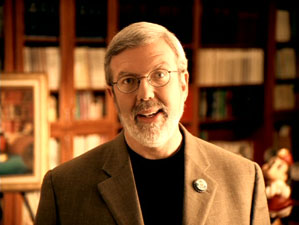
In the Silly Symphonies Souvenirs feature, Maltin talks with Dave Smith, the founder of the Walt Disney Archives. They talk about the merchandising of the short subjects. They discuss how after Three Little Pigs, Disney began to explore the merchandising market that had become so popular with Mickey Mouse. With the success of the Three Little Pigs in theaters, it became the first Silly Symphony short to have large amounts of merchandise distributed. Soon after this, every Silly Symphony had merchandising soon before it came out to get the public aware of the shorts, and just in case it reached the success of Three Little Pigs. There are games, china figurines, toothbrush holders, books, etc… It also talks about how Mickey Mouse was used to present them to the general audience.
There are a total of seven Easter Eggs in the two DVDs, with the first disc containing five of them. All of these have Walt Disney talking about Silly Symphonies and then proceeding to introduce and talk about a particular one. Four Silly Symphonies are only found in these Easter Eggs: Water Babies, Who Killed Cock Robin?, The Practical Pig, and Farmyard Symphony. The others have Walt Disney introducing The Grasshopper and the Ants, Wynken, Blynken, and Nod, and The Old Mill.

Case Study:
Disney has decided to make this release extra special by encasing a two-disc keepcase in a tin case. The cover of both the tin and the DVD case features a scene from The Ugly Duckling and includes the subtitle “The Historical Musical Animated Classics.” Disney has released a limited amount of cases for this collection with a total of only 150,000 copies to make this a collector’s item. The tin case and the DVD cases are both signed by Leonard Maltin and Roy E. Disney. Inside the DVD case is a 6 page booklet about Walt Disney, the Silly Symphonies and it also includes a chapter list. Another insert features the Fall 2001 guide to Disney DVDs. Finally, in this release is also a lithograph of the short Flowers and Trees.
Ink And Paint:
All of the Silly Symphonies are presented in the full screen format, and this includes Walt Disney and Maltin’s introductions. There are both color and black and white shorts. Most of the shorts are visually stunning, and The Old Mill has been incredibly restored. However, some of the other shorts still have a grainy quality to the picture. Some of the older black and white cartoons have images that just won’t stay still and you can see the difference in lighting between frames.

Scratch Tracks:
Sound is naturally very important to these cartoons, and I was pleased with the final result. The sound is presented in Dolby Digital Surround, but one must remember that many of the older cartoons used primitive recording equipment, such as Cinephone, which doesn’t make the music sound as well as the much better RCA recorders. The music sounds good, and in the end, that’s what matters with these cartoons.
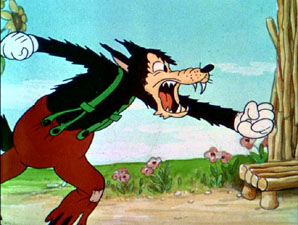
Final Cut:
The Silly Symphonies are wonderful cartoons. While some just border on being plain cute, others are actually good and clever. The use of music is certainly the highlight and the cartoons manage to delight people of all ages. I’ve shown this to younger children, and to my parents and all of them enjoyed the experience. There are some shorts that I noticed were missing from this collection, such as King Neptune, and The Pied Piper of Hamlin. However, the collection is sufficient enough to satisfy our craving for these great animated treasures.
 | ||
 |







